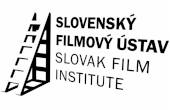Mid 2009 is therefore an ideal date for stock taking concerning the status quo. How far along are the various EU member states with this process? What work remains to be done? Who will be ‘first past the post' or can we expect a cracking photo finish? A timely analysis of these questions is provided by the Strasbourg-based European Audiovisual Observatory, part of the Council of Europe, in its latest IRIS Special report:
Ready, Set... Go?
The Audiovisual Media Services Directive
This brand new report is the fruit of a workshop co-organised in January of this year by the Observatory and the Saabrücken-based European Institute of Media Law. 32 experts from 15 different countries pooled their collective knowledge of media regulation in Europe in order to provide a multi-facetted analysis of the current work being carried out on the transposition of the AVMSD into national legislation.
The report opens with a useful summary of the discussions which took place during the workshop. The first part deals with an overview of the main concepts contained within the Directive and their significance for the transposition into national law. This is followed by work on the practical issues and solutions and rounded off by an analysis of the issues relating to secondary legislation and monitoring following the initial primary transposition into national law.
This publication then sets the scene for the transposition of the Directive by looking at the legal framework which serves as a background for the transposition. The various degrees of autonomy of the members states in absorbing the Directive's stipulations into their national legislation as well as the limits to this autonomy are also explored. The actual room for manoeuvre of each member state turns out to be relatively limited concerning the regulation of services defined as audiovisual media services and their subsequent categorisation into linear and non-linear.
Subsequent chapters examine the impact which the Directive's transposition will have on key audiovisual structural factors as well as topical key issues. The Directive's impact on the national regulatory frameworks governing: linear and non-linear media services, the definition of editorial responsibility and effective control, and product placement, for example, is dealt with in individual chapters.
Several specific topics are examined from 6 national points of view. One may wonder what effect the transposition of the AVMSD will have on rights to short reporting about major televised football matches in Austria. Or indeed how far the French CSA will need to develop its enforcement actions aiming at limiting incitement to hatred in the media, attacks on human dignity or other harmful content. How will the complete transposition of the AVMSD affect these provisions? The Latvian experience with the transposition process, in particular concerning junk food and self-regulation and the particular situation in Spain where the lack of an independent regulatory authority raises specific challenges are also presented. The British and Irish models are examined in the light of co-and self-regulatory practices in these two countries. In both cases, regulatory power in the audiovisual field is delegated from Parliament to the respective regulatory authorities who act in close consultation with industry stakeholders.
Focusing on the complex task of the regulatory authorities themselves, the report also devotes two chapters to issues of jurisdiction, determination and cooperation between the various national authorities, on the one hand, and their duty to monitor compliance with the terms of the directive on the other. Who is keeping watch and how do the watchdogs work with each other over and beyond national borders?
As far as promoting European cultural values is concerned, the report looks at the effects of the transposition of the Directive on the circulation and promotion of European works. The promotion of European works in on-demand services is examined in terms of legislation already in existence but also under the imminent transposition of Art. 3.i of the AVMSD. The authors of this report also examine the dichotomy between promoting cultural diversity, on the one hand, and the respect of world trade and competition rules, on the other. The ADVMSD article regulating the promotion of European works by non-linear service providers is examined with reference to other legal texts with a bearing on this field: the UNESCO Convention, GATT and GATS.
A must-read report which, through a detailed and structured analysis of current media issues, sets the scene for the final transposition of the Audiovisual Media Services Directive.
IRIS Special, 2009 Edition,
"Ready, Set... Go? The Audiovisual Media Services Directive ", 89 €
ISBN 978-92-871-6665-4
European Audiovisual Observatory, Strasbourg, 2009.
For further press information and a free press copy for review, please contact:
Alison Hindhaugh, Information and Press Officer, tel.: +33 (0) 3 88 14 44 10 -E-mail: This email address is being protected from spambots. You need JavaScript enabled to view it.
To order a copy of this IRIS Special or take out a subscription to IRIS monthly legal review with its IRIS plus supplement, click here or contact: This email address is being protected from spambots. You need JavaScript enabled to view it.
For further information on the content of our IRIS products, please contact our legal department:
This email address is being protected from spambots. You need JavaScript enabled to view it. - This email address is being protected from spambots. You need JavaScript enabled to view it.
The European Audiovisual Observatory
Set up in December 1992, the European Audiovisual Observatory's mission is to gather and distribute information on the audiovisual industry in Europe. The Observatory is a European public service body comprised of 36 member states and the European Community, represented by the European Commission. It operates within the legal framework of the Council of Europe and works alongside a number of partner and professional organisations from within the industry and with a network of correspondents.
In addition to contributions to conferences, other major activities are the publication of a Yearbook, newsletters and reports, the compilation and management of databases and the provision of information through the Observatory's Internet site (http://www.obs.coe.int/).



















